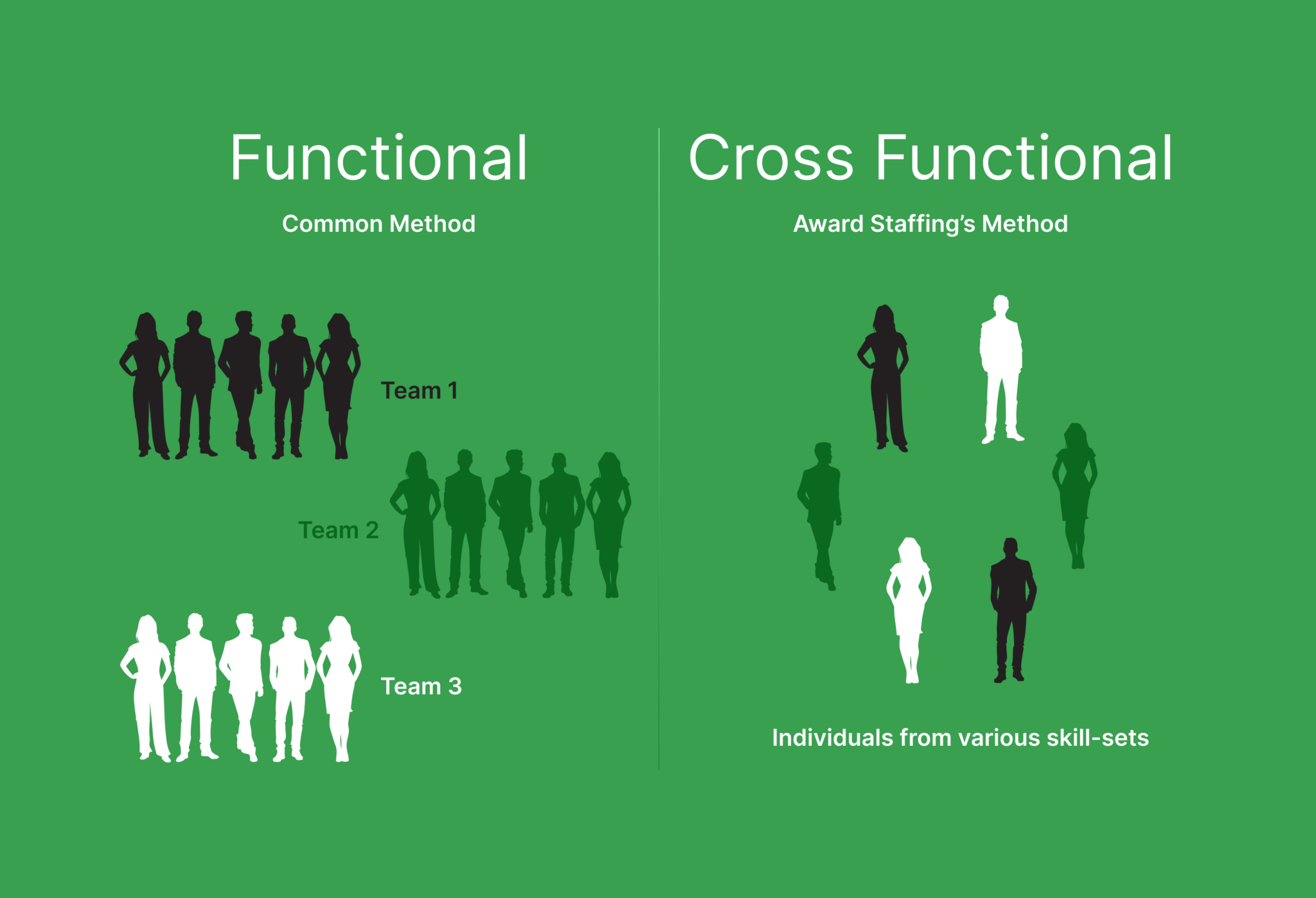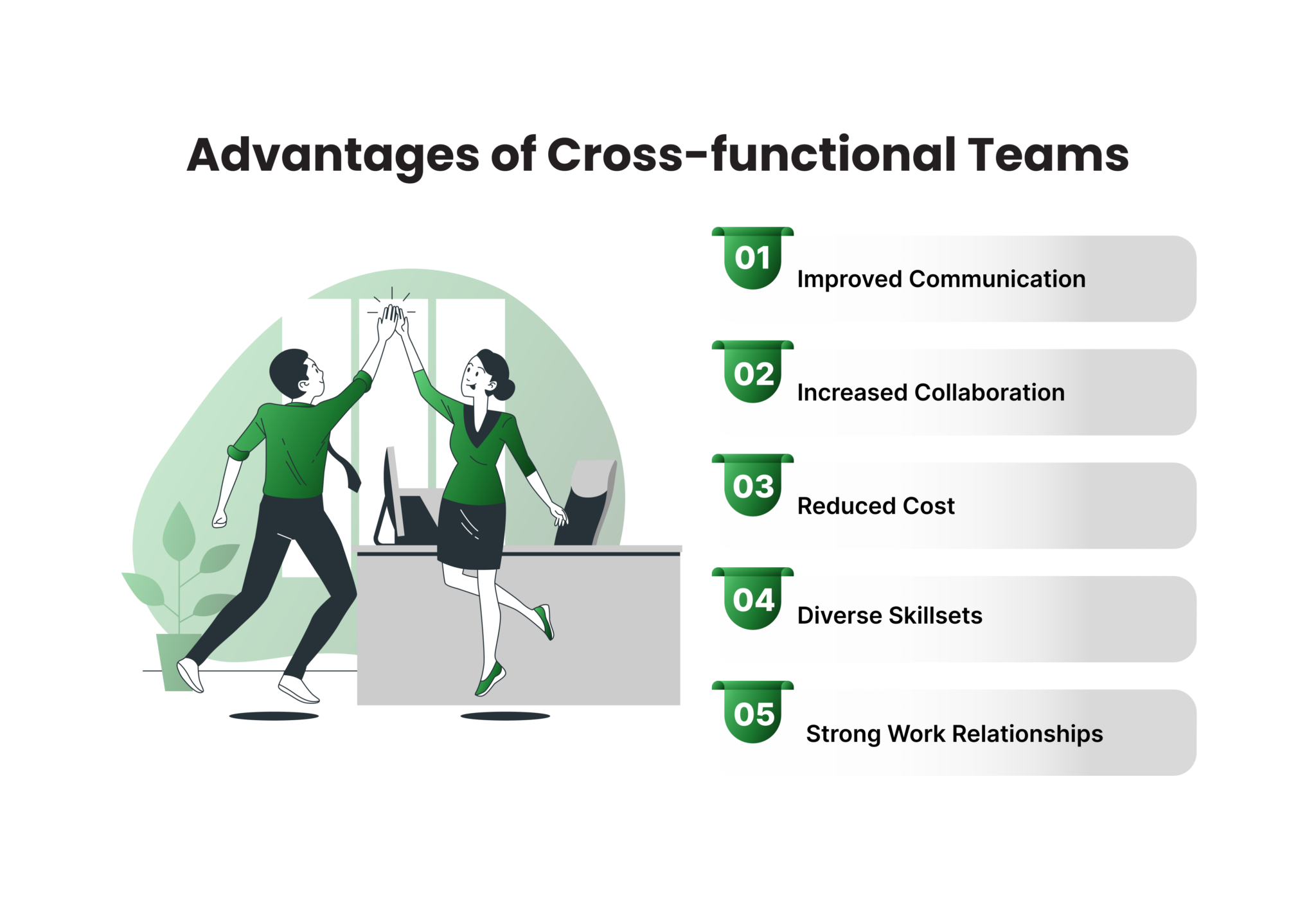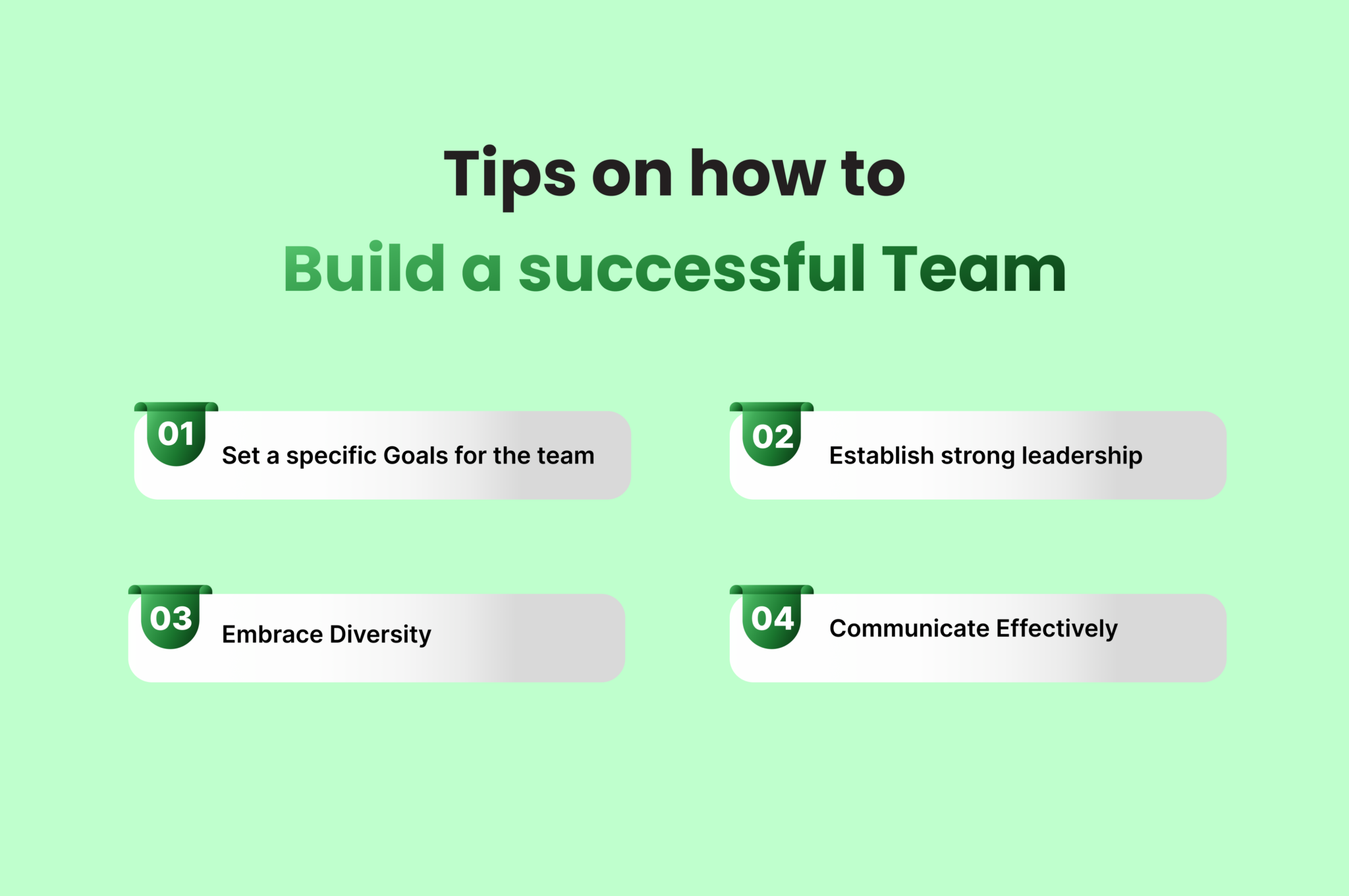Nowadays, leading firms understand the importance of managing cross-functional teams to rapidly develop creative solutions. Cross-functional teams, at their best, bring together top individuals with diverse skill sets to design, build, and market innovations that can propel a company well ahead of the competition. However, it’s important to learn the best strategies to manage cross-functional teams. This helps companies overcome any challenges while getting the most out of a collaborative effort. Let’s discuss it all in this post.
How do you define a cross-functional team?
People with different backgrounds and expertise get together to form a cross-functional team. Having members from different departments work together on the same project may be really beneficial. Therefore, developers, researchers, designers, marketers, salespeople, etc. may all have a hand in the making and releasing of new software.

In small companies, where employees often wear many hats, the formation of cross-functional teams often occurs organically. For instance, a business with a one-person marketing department must often interact with product and sales staff.
So, a cross-functional team forms organically out of need. Nevertheless, it still has to be managed differently than a group of individuals in the same department.
Advantages of cross-functional collaboration
Virtually every successful business in the world today makes use of cross-functional teams. Google, Facebook, Netflix, and Amazon are just a few of the industry leaders who understand the value of working together across departments. So, why did they make this choice? So, let’s discuss why:
1. Being able to share knowledge
The quality and output of any business may benefit from the development of its workers’ skills. By working together across departments, your team will be able to share knowledge and expertise. Your team may grow and improve as a whole by working together across departments.
Knowledge is always added to when professionals from different fields collaborate and share their insights. The ability to gracefully handle adversity is also crucial for the success of cross-functional teams.
2. Having a team of experts with a variety of skills
Your company may benefit from the pooled knowledge of experts from many fields if it convenes such a group. The results of brainstorming sessions with a group of specialists from different fields tend to be quite promising. The team encourages its members to think creatively and see things in a new light.
Using the expertise of a wide variety of people, your company may approach project development in a novel way. There will also be little to no hesitance to take on novel, creatively challenging initiatives.
3. Promoting and encouraging teamwork among employees
Your business may have access to a plethora of information if it gathers experts from a variety of industries. Coordination and collaboration are essential for success when several individuals are working together to attain the same objectives. In the same way, a cross-functional team can only continue to operate if its members are able to work together effectively.
By working together, members of various teams demonstrate the benefits of cooperation to the rest of the company. In turn, this will help foster a culture at work that values cooperation and synergy among workers.
4. Being able to complete projects faster
This is the biggest advantage for a business, as it helps the company in the long run. In reality, this is a major driver for companies to establish multifunctional groups. Together, these groups may streamline processes and boost productivity. In addition, coordinating with other divisions is unnecessary since your cross-functional team will consist of the best personnel from every division.
Self-sufficiency is a hallmark of cross-functional teams due to their capacity to monitor and address issues at almost any point in the project’s life cycle. In general, these teams’ individuals know how to make the most of the resources at their disposal to create and execute projects on schedule.

What Challenges Do Cross-Functional Teams Face?
Although teamwork makes the dream work, you have to realize that there are some challenges that come with it. A team full of professionals with different skills and expatriates sounds like a recipe for success. But the differences can cause conflict within the team too. These same cross-functional teams have the potential to bring inefficiencies and biases, as well as conflicting personalities, miscommunications, competing priorities, and other issues. For a project manager, managing all of these moving pieces and personalities is no easy task.
Here are some of the potential challenges that come with cross-functional collaboration:
1. Unfamiliarity between employees from different backgrounds
In cross-functional teams, employees from different departments get together for a project. Since they belong to different departments, they may not be very familiar with each other. They likely have few or no prior successes together that can create a foundation of trust, which can be a challenge to overcome among the teammates.
2. Issues of conflict
When there is no basis for familiarity among teammates and a poorly structured or nonexistent decision-making process, innovation cannot occur. Your team requires a safe atmosphere in which they can discuss and debate their ideas. If this environment is not created, team collaboration may fail.
3. Lack of accountability
Team members that do not openly interact and collaborate are more likely to be competitive, focus on their own performance, and blame others. This results in a low-standard environment.
4. Lack of commitment
Members of cross-functional teams may instinctively prioritize their typical department responsibilities above project tasks, contributing to a sense of lack of ownership or responsibility for the team.
5. Less focus on outcomes
If team members are not encouraged to value the larger picture, they may become overly focused on completing activities within their scope of influence at the expense of the end product.
What are the strategies for managing cross-functional teams well?
The potential challenges that come along with cross-functional teams can be minimized by employing good management strategies. They will remove the hurdles that are holding your staff back and position your company for success. Let’s discuss those strategies:
1. Create the best team
Cross-functional teams benefit from the diverse set of skills and abilities that each team member brings to the table. As a project manager, you must also ensure that the correct people are in place. Developing through organizational charts can assist you in capitalizing on team strengths and finding common ground among team members. This will make it easy for you to incorporate the best personnel for the project in the end.

2. Define your goals properly
One of the main reasons why cross-functional teams fail is because they are formed from several divisions within a company. They may have distinct, and sometimes conflicting, agendas or legacy practices that might impede performance. Team members may find it challenging to cooperate and contribute if there is no clear alignment on shared goals.
Project managers can avoid this disagreement by establishing clearly defined project objectives. Determine the desired outcome and link it back to the real deliverables required to reach that goal. Ascertain that the team is working together to set goals that are both clear and quantifiable.
Allowing everyone on the team to offer their ideas will not only increase the quality of the goals you set but will also help each team member feel like they have ownership in the project. It is also critical to define distinct roles. When your team members understand their position in the process, they are more inclined to collaborate with other teams to complete tasks, resulting in wiser, more sustainable decision-making.
3. Ensure that the communication among the team is clear
Effective cross-functional team collaboration might feel a lot like herding cats, especially when teams are used to working autonomously. Collaborative communication necessitates a mentality shift—your team members must understand how opening up channels across teams can not only increase results but also help them accomplish their jobs better.
Project management and office communication tools may facilitate much of this collaboration if your teams understand how to use them successfully. Office communication technologies like Slack and Google Chat, as well as meeting technology solutions like Zoom and BlueJeans, can help your company’s scattered employees establish open lines of communication. They are especially beneficial when team members are scattered across the country.
4. Types of project management solutions that you can use
You can use the following project management solutions to help your team stay on track with workflows and priorities:
- Asana
- Workfront
- Trello
Other than that, cloud storage tools can make sharing and collaborating easier while also ensuring quality and version control.

Companies can reap significant benefits just by bringing previously disjointed teams together (virtually or in person). You can set up team-building exercises to create open communication channels. Schedule regular team meetings to engage and exchange work and ideas.
Collaboration across teams can assist you in identifying communication issues throughout your organization. Bringing these issues to light and establishing open channels of communication will have a long-term positive impact on your company and its bottom line.
5. Build trust
Functional organizational structures frequently rely on siloed communication methods or terminology that may not be easily understood across an enterprise. This corporate jargon can obstruct communication and make collaboration more difficult.
Encourage team members to recast their ideas in more simple, generic terms that everyone in the organization can comprehend when forming cross-functional teams. You may boost collaboration, trust, and creativity by building a cross-functional shared language.
6. Encourage improvement through trial and error among your team
Another way to help build a work environment where cross-functional teams can succeed is by letting your team experiment. Whether they fail or succeed, encourage them to try nonetheless. Many motivational speakers, business consultants, and entrepreneurial coaches may have promoted the concept of failure as a necessary step toward success. Studies have shown that allowing teams to fail results in greater discoveries.
Create a risk-free environment that values failure, iterative procedures, and growth. Such failures can help teams figure out new resolutions to old challenges.
7. Come up with resolutions to manage conflicts
We all know that workplace disagreement is all too common. Working on a cross-functional team is no exception. Managing cross-functional teams sometimes entails bringing together normally compartmentalized teams. Consider sales and marketing. While aligning sales and marketing results in more successful marketing campaigns and more sales, these teams frequently spend more time blaming each other than seeking solutions.

People jostle for power, influence, and limited resources when forming cross-functional teams. As a project manager, you must be prepared for, and even embrace, controversy. Disagreements in opinion are frequently merely veiled chances for growth and fresh ideas. Keep in mind that a company’s culture may have a major impact on productivity.
8. Keep reevaluating processes
One of the advantages of really cross-functional teams is their agility, or capacity to adjust swiftly to change. Cross-functional teams frequently use an agile strategy to ensure that new investments, tools, or even marketing campaigns work in a seamless, secure, and cost-effective manner.
Once you’ve established effective cross-functional teams, it’s critical to continue to review, measure, and refine the procedures and tools you’ve implemented over time. What is effective? What’s not to like? Where did communication fail? What innovations can be replicated? This approach will assist you in continuing to optimize your operations, developing creative products, and encouraging effective collaboration within the organization.
Even the most experienced project managers may find it difficult to build and manage effective cross-channel teams. Organizations that can bring together unique competencies, on the other hand, can infuse new perspectives and insights into their organization.
Wrapping up
Cross-functional collaboration can readily improve the performance of your team. It enables you to form specialized teams of people from various professional backgrounds or departments. Remember that cross-functional teams are capable of carrying out challenging tasks while prioritizing innovation and efficiency. However, in order for cross-functional collaboration to be successful in your firm, you must be aware of the hurdles ahead of time.
The methods we brought to you can assist you in efficiently establishing cross-functional teamwork. Follow these strategies, and you’ll see how they will create a healthy, productive, and innovative workplace. For similar posts, follow our blog.

